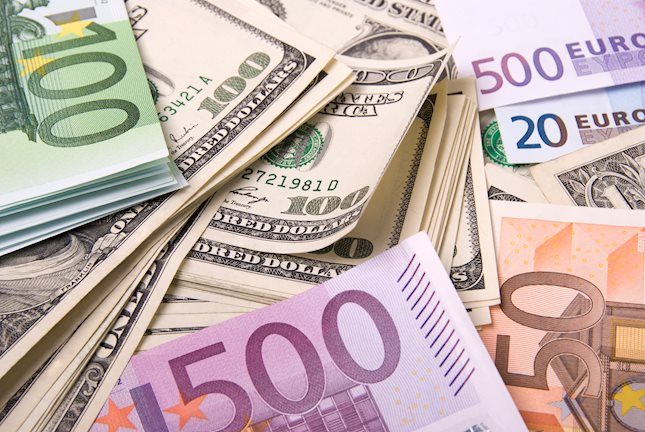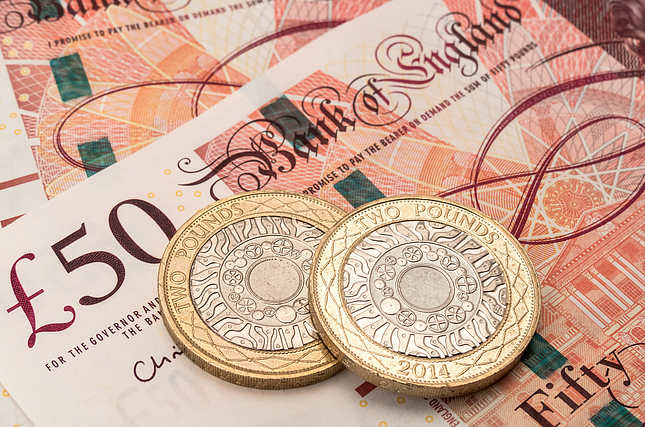- USD/CHF extends its winning streak due to the dovish mood surrounding the Fed’s policy outlook.
- CME's FedWatch Tool suggests an increase in odds of a 50-basis point Fed rate cut to 74.5% in September.
- Stable inflation has raised the likelihood of a third consecutive rate cut by the SNB in September.
USD/CHF continues its losing streak that began on July 30, trading around 0.8500 during the European session on Monday. This downside of the USD/CHF pair is attributed to expectations of the Federal Reserve’s (Fed) reducing interest rates in September.
Disappointing US jobs market data and a larger-than-expected contraction in the ISM Manufacturing PMI have raised the probability of a 50-basis point rate cut in September, increasing to 74.5% from 11.5% a week earlier, according to the CME's FedWatch Tool.
US Nonfarm Payrolls (NFP) increased by 114K in July from the previous month of 179K (revised down from 206K). This figure came in weaker than the expectation of 175K, data showed on Friday. Additionally, the US ISM Manufacturing Purchasing Managers Index (PMI) tumbled to an eight-month low of 46.8 in July. Moreover, traders await ISM Services PMI for July on Monday, which is expected to rise to 51.0 from 48.8 prior.
In Switzerland, inflation increased by 1.3% year-over-year, in line with expectations and consistent with previous rises. This stability strengthens the likelihood of a third consecutive rate cut by the Swiss National Bank (SNB) in September. Additionally, the 10-year yield on Swiss bonds has dropped to a near two-year low of 0.37%. The SNB has been ahead of global peers in its monetary easing, having cut borrowing costs in both of this year’s decisions.
Traders are looking forward to Tuesday's release of the July Unemployment Rate and June Real Retail Sales, which may provide further insight into the Swiss economy and influence the SNB’s policy direction.
Swiss Franc FAQs
The Swiss Franc (CHF) is Switzerland’s official currency. It is among the top ten most traded currencies globally, reaching volumes that well exceed the size of the Swiss economy. Its value is determined by the broad market sentiment, the country’s economic health or action taken by the Swiss National Bank (SNB), among other factors. Between 2011 and 2015, the Swiss Franc was pegged to the Euro (EUR). The peg was abruptly removed, resulting in a more than 20% increase in the Franc’s value, causing a turmoil in markets. Even though the peg isn’t in force anymore, CHF fortunes tend to be highly correlated with the Euro ones due to the high dependency of the Swiss economy on the neighboring Eurozone.
The Swiss Franc (CHF) is considered a safe-haven asset, or a currency that investors tend to buy in times of market stress. This is due to the perceived status of Switzerland in the world: a stable economy, a strong export sector, big central bank reserves or a longstanding political stance towards neutrality in global conflicts make the country’s currency a good choice for investors fleeing from risks. Turbulent times are likely to strengthen CHF value against other currencies that are seen as more risky to invest in.
The Swiss National Bank (SNB) meets four times a year – once every quarter, less than other major central banks – to decide on monetary policy. The bank aims for an annual inflation rate of less than 2%. When inflation is above target or forecasted to be above target in the foreseeable future, the bank will attempt to tame price growth by raising its policy rate. Higher interest rates are generally positive for the Swiss Franc (CHF) as they lead to higher yields, making the country a more attractive place for investors. On the contrary, lower interest rates tend to weaken CHF.
Macroeconomic data releases in Switzerland are key to assessing the state of the economy and can impact the Swiss Franc’s (CHF) valuation. The Swiss economy is broadly stable, but any sudden change in economic growth, inflation, current account or the central bank’s currency reserves have the potential to trigger moves in CHF. Generally, high economic growth, low unemployment and high confidence are good for CHF. Conversely, if economic data points to weakening momentum, CHF is likely to depreciate.
As a small and open economy, Switzerland is heavily dependent on the health of the neighboring Eurozone economies. The broader European Union is Switzerland’s main economic partner and a key political ally, so macroeconomic and monetary policy stability in the Eurozone is essential for Switzerland and, thus, for the Swiss Franc (CHF). With such dependency, some models suggest that the correlation between the fortunes of the Euro (EUR) and the CHF is more than 90%, or close to perfect.
Information on these pages contains forward-looking statements that involve risks and uncertainties. Markets and instruments profiled on this page are for informational purposes only and should not in any way come across as a recommendation to buy or sell in these assets. You should do your own thorough research before making any investment decisions. FXStreet does not in any way guarantee that this information is free from mistakes, errors, or material misstatements. It also does not guarantee that this information is of a timely nature. Investing in Open Markets involves a great deal of risk, including the loss of all or a portion of your investment, as well as emotional distress. All risks, losses and costs associated with investing, including total loss of principal, are your responsibility. The views and opinions expressed in this article are those of the authors and do not necessarily reflect the official policy or position of FXStreet nor its advertisers. The author will not be held responsible for information that is found at the end of links posted on this page.
If not otherwise explicitly mentioned in the body of the article, at the time of writing, the author has no position in any stock mentioned in this article and no business relationship with any company mentioned. The author has not received compensation for writing this article, other than from FXStreet.
FXStreet and the author do not provide personalized recommendations. The author makes no representations as to the accuracy, completeness, or suitability of this information. FXStreet and the author will not be liable for any errors, omissions or any losses, injuries or damages arising from this information and its display or use. Errors and omissions excepted.
The author and FXStreet are not registered investment advisors and nothing in this article is intended to be investment advice.
Recommended content
Editors’ Picks

EUR/USD: Recovery remains capped below 1.0300
EUR/USD is consolidating its recovery below 1.0300 in the European morning on Friday. The pair breathes a sigh of relief as the US Dollar rally stalls even as markets stay cautious amid geopolitical risks and Trump's tariff plans. The focus remains on US ISM PMI data and central bank talks.

GBP/USD retakes 1.2400, as focus shifts to US ISM PMI data
GBP/USD rebounds to test 1.2400 in the European session on Friday. A minor pullback in the US Dollar allows the pair to find some respite after having lost over 1% on the outset of the New Year on Thursday. All eyes remain on the US ISM PMI data and Fedspeak for further impetus.

Gold takes out all key resistance levels; where next?
Gold price consolidates a two-day upsurge above $2,650 early Friday. The US Dollar stalls its uptrend amid sluggish US Treasury bond yields and a cautious mood. Gold price cheers geopolitical woes and a bullish daily RSI as buyers scale all key technical hurdles.

Bitcoin, Ethereum and Ripple eyes for a rally
Bitcoin’s price finds support around its key level, while Ethereum’s price is approaching its key resistance level; a firm close above it would signal a bullish trend. Ripple price trades within a symmetrical triangle on Friday, a breakout from which could signal a rally ahead.

Three Fundamentals: Year-end flows, Jobless Claims and ISM Manufacturing PMI stand out Premium
Money managers may adjust their portfolios ahead of the year-end. Weekly US Jobless Claims serve as the first meaningful release in 2025. The ISM Manufacturing PMI provides an initial indication ahead of Nonfarm Payrolls.

Best Forex Brokers with Low Spreads
VERIFIED Low spreads are crucial for reducing trading costs. Explore top Forex brokers offering competitive spreads and high leverage. Compare options for EUR/USD, GBP/USD, USD/JPY, and Gold.